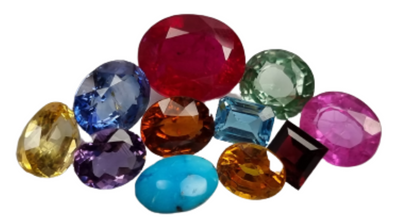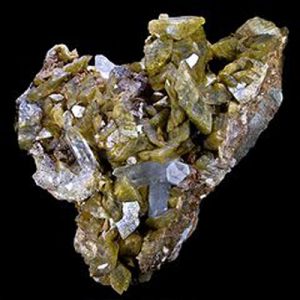Siderite: Gemstones Information
Siderite is a mineral composed primarily of iron carbonate (FeCO3) and belongs to the carbonate mineral group. It is known for its distinctive brown color, often with shades of yellow, green, or gray, and its widespread occurrence in various geological settings. Siderite has played significant roles throughout history, both as an ore of iron and as a collector’s mineral. Let’s explore detailed information about siderite, including its properties, occurrences, uses, and significance.
Properties of Siderite:
Chemical Composition: Siderite is composed of iron carbonate (FeCO3), with varying amounts of impurities such as magnesium, calcium, and manganese, which can influence its color and properties.
Color: Siderite commonly exhibits shades of brown, ranging from yellowish-brown to dark brown, although it can also appear greenish or grayish depending on impurities.
Crystal Structure: Siderite crystallizes in the trigonal crystal system and typically forms rhombohedral or scalenohedral crystals. It may also occur in massive, granular, or fibrous aggregates.
Hardness: Siderite has a hardness of about 3.5 to 4 on the Mohs scale, making it relatively soft compared to many other minerals.
Luster: It typically displays a vitreous to pearly luster on its cleavage surfaces.
Occurrences of Siderite:
Siderite is a widespread mineral found in various geological environments around the world. It occurs in sedimentary rocks such as limestone, shale, and clay, as well as in hydrothermal veins and replacement deposits. Significant occurrences of siderite can be found in regions such as:
Europe: Siderite deposits are abundant in countries like Germany, France, England, and Spain, where it is often associated with coal seams and iron ore deposits.
North America: The United States and Canada also have notable siderite deposits, particularly in regions with extensive coal and iron mining operations.
China: China is another significant producer of siderite, with deposits found in various provinces across the country.
Uses of Siderite:
Iron Ore: Historically, siderite has been an important ore of iron, along with hematite and magnetite. It has been mined for centuries as a source of iron for smelting and steel production.
Mineral Specimens: Siderite is valued by mineral collectors for its distinctive crystal habits, vibrant colors, and associations with other minerals. Fine specimens of siderite crystals are sought after for display in mineral collections and museums.
Lapidary Purposes: Siderite may also be used in lapidary work, where it is cut and polished into cabochons, beads, or decorative items for jewelry and ornamental purposes.
Significance and Economic Value:
Siderite holds significance both economically, as an important source of iron ore, and culturally, as a collector’s mineral prized for its aesthetic appeal. In addition to its role in iron production, siderite contributes to our understanding of sedimentary processes, mineral formation, and Earth’s geological history. Its presence in various geological environments provides valuable insights into past environmental conditions and geological events.
Conclusion:
In conclusion, siderite is a versatile mineral with significant economic and geological importance. As an iron ore, it has been vital to human civilization for millennia, contributing to the development of metallurgy and industry. Additionally, siderite’s aesthetic qualities and widespread occurrence make it a fascinating subject for mineral collectors and enthusiasts. Whether admired for its economic value or its beauty, siderite remains an integral part of Earth’s mineralogical diversity and geological heritage.





